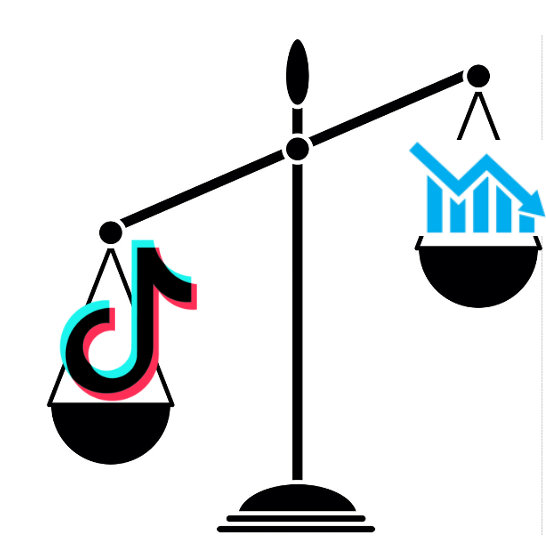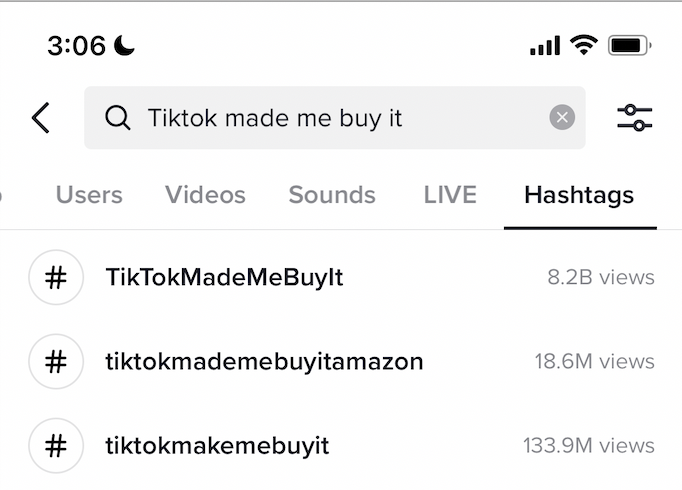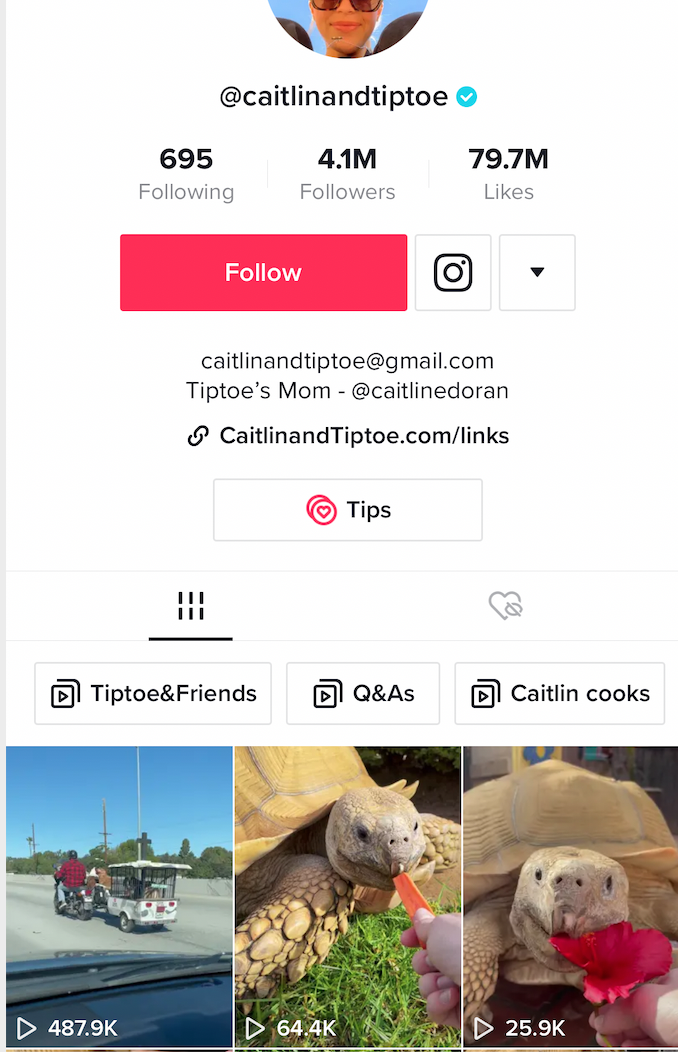Pros and Cons of Tiktok [for creators and marketers]
Pro: The Algorithm Makes It Relatively Easy To Go Viral
Watch time is one of the most heavily weighted factors into Tiktok’s algorithm. If a video is 14 seconds long and has an average watch time of 12-13 seconds, it’s likely that it’s going to do well.
This is because when a video is first posted, Tiktok shows it to about 10-20 people. If most of those people watch the entire video, Tiktok will then serve it to another 100 people. If the average watch-time is still good, it’ll get shown to another 1,000, and so on.
*There are many more factors in Tiktok’s algorithm(trending sounds for example), and no one knows exactly how it works, but the process described above describes the nuts and bolts.
The takeaway is that the nature of the algorithm makes it possible for both new users and users with low follower counts to attain hundreds of thousands of views overnight.
Here’s an example of an account with “only” have 59k followers, that has exceeded one million views on multiple occasions.
Con: It’s Easy To Go Viral (not a typo)
Though, as Tiktok expert and consultant, @coach.stone notes, going viral can actually hurt your profile.
It’s accepted that a well-defined niche is the keystone of any successful social media strategy. Accounts grow because they attract the attention of people interested in the content category they’re posting about.
However, when a post goes viral, there’s a rapid influx of new followers. These followers are here because they liked the one post that went viral. Unfortunately, this leaves the brand or creator with two options.
They can continue posting content as usual
They can tailor their future content to be similar to the post that went viral
In option one, engagement will likely be low as this “other” content isn’t what the audience members followed you for.
In option two, you’re pigeonholed. Brands can’t deliver their messages as effectively, and creators can get burnt out from posting content they don’t have any passion for. It’s a lose-lose.
Pro: Social Commerce
According to Inc, social commerce grew 40% in 2021 and is expected to be a 2.9 trillion dollar market by 2026.
Inc defines social commerce as, “the intersection of e-commerce and social media. It is the harnessing of a brand's social platforms for sales, creating a seamless in-app path to purchase.”
And it turns out, social commerce is thriving on Tiktok.
Videos using the hashtag #Tiktokmademebuyit, have cumulatively amassed over 8.2 billion views.
Further, according to an Adweek survey, 15% of all adults and 36% of Gen Z respondents make purchases based on what they saw on TikTok - numbers that have both likely increased since Tiktok launched its in-app shopping features a couple months ago in November 2021.
Con: Effort required to post
Instagram rewards high-quality, professional-level posts. Meanwhile, on Tiktok more authentic, down-to-earth, content tends to do well. Don’t be fooled though, this does not mean it takes less effort to succeed on Tiktok than it does on Instagram.
While users don’t need a coordinated, aesthetically pleasing timeline, they do need to provide their audiences with something of value, and they need to do it quickly.
On Tiktok, there’s always another video, just one upwards-swiping motion away. Posts that fail to grab attention within the first 2-3 seconds are destined to fail. This means creators need to take the time to develop a well-crafted hook, script, speak semi-fluently, and deliver something interesting to watch.
Doing this takes time, making a Tiktok post a fairly sizable investment.
Pro: General Organic Reach
Organic reach on social media platforms is measured as a percentage. If an Instagram account has 1,000 followers and Instagram has 30% organic reach, it means that 300 people will see each post the account makes.
Organic reach has been declining for several years and in today’s world of social media, it’s at an all-time low.
Ignite Social Media reports that organic reach typically hovers around 5% across most platforms.
Tiktok blows all other platforms out of the water when it comes to organic reach. Adweek reported that organic reach back in June of 2021 was at an astounding 118%.
Unfortunately, it’s unlikely that this is still true. Historically, the trend has been that as social media platforms rise in popularity, they attract more advertisers and more content creators - resulting in harder competition for organic reach.
Disclaimer #2: Organic reach on Tiktok also seems to be more beneficial for smaller accounts. As seen in the screenshot below, accounts with millions of followers can experience organic reach as low as 0.6%.
Nonetheless, Tiktok has over one billion monthly active users and brands and content creators alike are still figuring out the platform. Meaning, organic reach on Tiktok is still relatively good, making it a great platform for gaining exposure.
Con: Younger Audience (in the U.S.)
According to Backlinko, 47.4% of Tikok’s users in the United States are aged between 10 and 29. Further, only 20% of all users on Tiktok are over 40. Though, this is an impressive increase from just a year and a half ago - as the number of American adults using Tiktok has grown 5.5x since then.
Overall thoughts on Tiktok
After reviewing the pros and cons of the platform, Youtuber Graham Stephan’s words come to mind. On a podcast with Real Estate Tycoon, Jason Oppenheim, Stephan said, “Tiktok is sort of like going to the gym, we all know that we should do it, because if we do, it’ll be good, but it’s annoying so we just put it off.”




